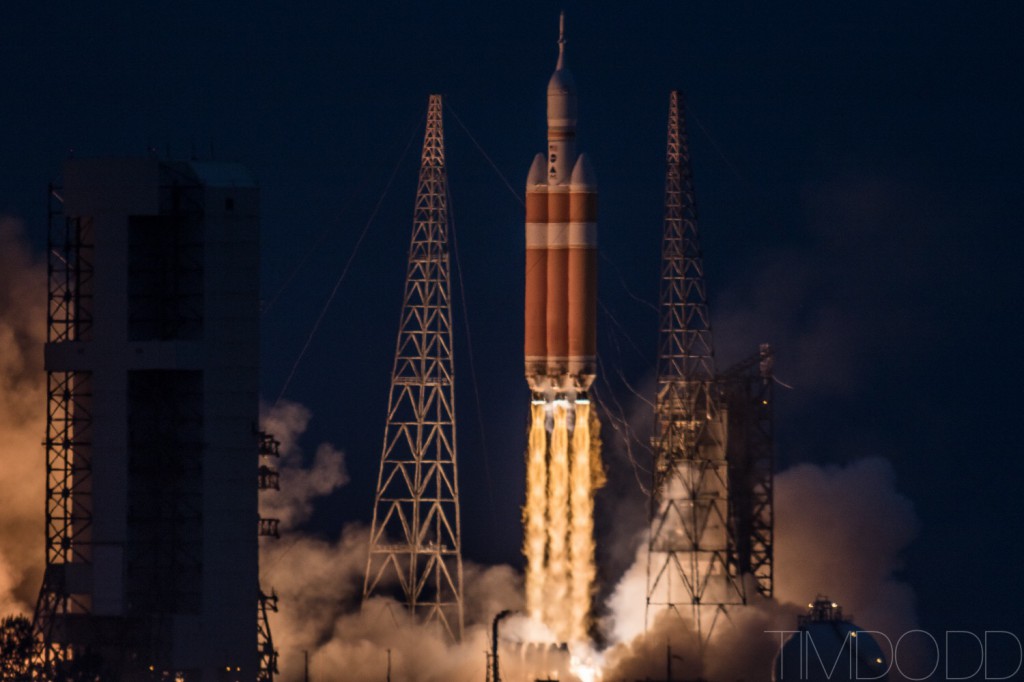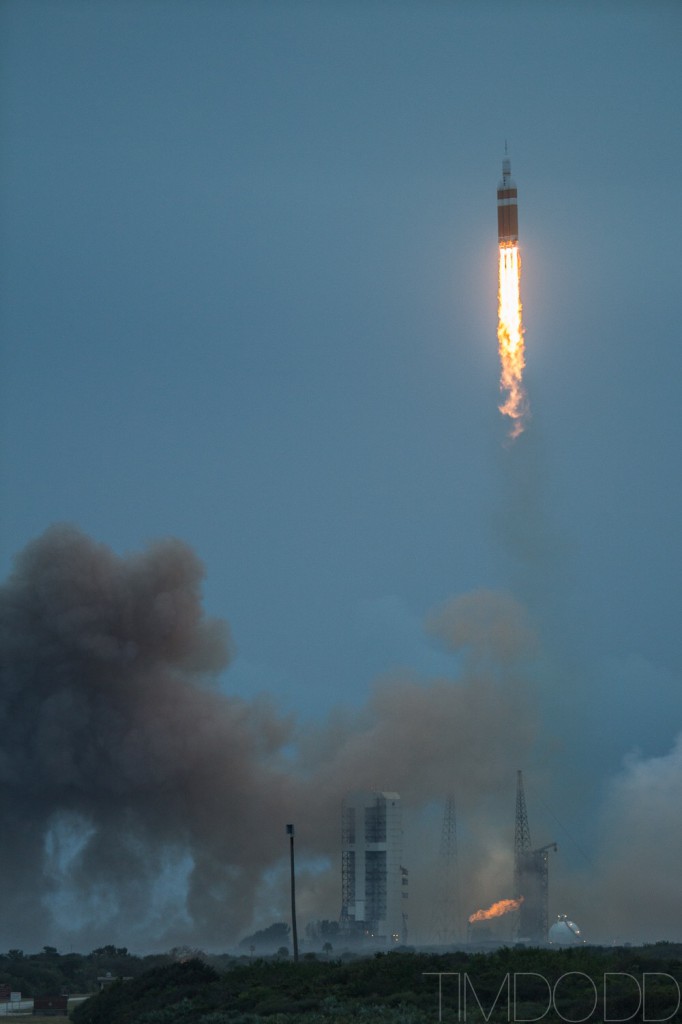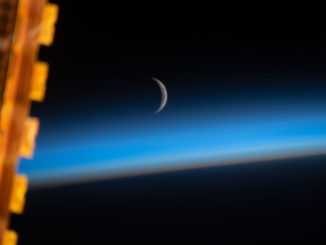
CAPE CANAVERAL — NASA’s inaugural Orion spaceship has set sail on a two-orbit, four-hour shakedown cruise around the Earth, leaving port atop a United Launch Alliance Delta 4-Heavy rocket and its incandescent power at 7:05 a.m. EST today.
The 46,000-pound craft rocketed into its preliminary orbit, setting the stage for a coast period and another engine firing by the Delta 4-Heavy later this morning to put Orion on a trajectory to travel 15 times higher than the International Space Station before re-entering over the Pacific Ocean and splashing down 600 miles southwest of San Diego at 11:28 a.m. EST (1628 GMT).
“This is going to be a vehicle that could fly for us for 30 years, potentially, and this is the first one, the first tailnumber coming out the chute. This is like the forefather of this great fleet of vehicles that’s going to be coming online,” said astronaut Rex Walheim, part of the Orion development team and member of the final space shuttle crew.
“This is the opening of a new era. It is the opening of the Orion program. It’s really exciting because it’s that transition we have been waiting for. It’s been about three-and-a-half years since I last flew on the space shuttle (and) closed the program down with the anticipation these new programs would be coming along. Now here we are. It’s really exciting to see the first flight of Orion,” Walheim said.
This mission is known as Exploration Flight Test No. 1 — EFT 1 — to gather real-life data on the performance of Orion’s avionics, software, radiation protection, heat shield, parachutes and recovery systems.
“EFT 1 is a compilation of the riskiest events that we are going to see when we fly people. So this test flight is a great opportunity to fly those and see them in operation. Some of these events are difficult or even impossible to test on the ground. EFT 1 gives us a chance to put all those together,” said Mark Geyer, Orion program manager.
“Using the Delta 4 heavy gets us 15 times higher than space station and about 84 percent of lunar entry velocity,” he said. “So we start seeing that different physics, we start seeing those very high temperatures, high velocities, so that’s one of the big things we’ll test.
“And as we go through the Van Allen belts, we’re going to see this radiation effect on the computers. We’re going to measure, with dosimeters, the environment but we’re also going to see how the avionics behave, which is actually more important, and how do our mitigations work?”
As for re-entry, “we have a lot of parachutes because we need to slow the vehicle down from about 300 mph to 20 mph, so we do that in stages,” he said. “We’ve done a lot of drop tests out in Yuma (Arizona) and looked at failure cases, but until you’ve actually dropped it in the exact air density and speed you’re going to see, we’re certainly going to learn stuff from that.”

The countdown began last night at 9:05 p.m. EST and the Orion spacecraft was powered up at 1:05 a.m. EST for its test flight.
The overnight hours were spent loading liquid hydrogen and liquid oxygen propellants into the three Common Booster Cores and upper stage of the Delta.
Liftoff was delayed from Thursday by an errant boat in the restricted waters of the Atlantic, ground wind gusts above the limit and ultimately an issue with fill and drain valves. The 9-million-pound mobile service gantry was left retracted for the 24-hour delay.
The triple-barreled Delta 4-Heavy rocket is America’s largest unmanned booster currently available. The United Launch Alliance rocket is capable of lofting the biggest and heftiest cargos.
The mammoth vehicle is created by taking three Common Booster Cores — the liquid hydrogen-fueled motor that forms a Delta 4-Medium’s first stage — and strapping them together to form a triple-wide rocket, and then adding an upper stage.
A staggered ignition sequence of the three main engines began at T-minus 7 seconds with the starboard booster, then two seconds later by the core and port boosters, a measure to reduce the free hydrogen fireball that has been a trademark of this launcher’s past.
At T-0, the holddown bolts released and the three launch pad umbilical arms swung back as the 23-story, 1.6 million pound rocket got airborne on two million pounds of thrust. Each Aerojet Rocketdyne engine was capable of generating 17 million horsepower.
“And liftoff at dawn. The dawn of Orion and a new era of space exploration,” NASA launch commentator Mike Curie said.
Less than a minute into the flight, the center Common Booster Core’s main engine throttled back to about half-thrust as a fuel conservation effort. The 15-story starboard and port boosters continued to operate at their maximum power setting, burning out and peeling away four minutes after liftoff.
The core then revved back up and burned for another 90 seconds before jettisoning to leave the upper stage to put Orion into orbit on 24,750 pounds of thrust.
Now out of the Earth’s atmosphere, the three 13×14-foot aerodynamic panels covering the Orion’s dummy service module were jettison, followed seconds later by the launch abort system tower being discarded.
The Aerojet Rocketdyne RL10B-2 engine burned for nearly 12 minutes, shutting down once a 115 by 552 mile orbit was achieved.
The engine restart is coming up at nearly two hours into the mission. That firing will inject Orion into a 3,609 mile high orbit at apogee and -23 miles at perigee to fall back into the atmosphere for landing.
Separation of Orion’s crew module from the launch vehicle is anticipated at T+plus 3 hours and 23 minutes.
Today marks the 28th Delta 4 launch, the 8th Delta 4-Heavy and the 90th ULA launch overall.
“We are on a Delta 4-Heavy. This is a great rocket for this test. It gets us to the high altitude and the velocity we need to test the heat shield, which is the primary objective of the test,” said Geyer.



